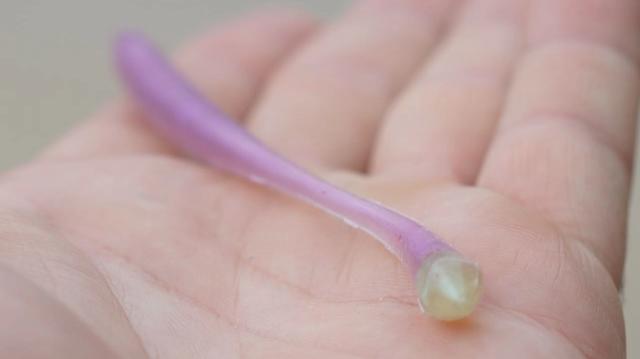
5 Ways To Finesse Fish In The Grass
When you think of grass fishing, it’s only natural to conjure images of classic power techniques like frogging, punching, and swimming a jig. There’s a reason for that, as those techniques produce some of the most exciting, visual strikes you can get – and they flat out put fish in the boat.As fun as it is to power fishing grass, there are times when those techniques falter; like post-frontal conditions, or when the grass has been beaten to death by angler pressure. In times like that, pays to think outside the box and break out the finesse techniques.Nope, you didn’t misread that. Finesse techniques aren’t just for open, clean water and hard cover. With a little tweaking they can be just as effective in the grass – and bail you out the same way they do when the bite gets tough in open water situations.Here are 5 ways to finesse fish in the grass – and how to rig them up.
1. Finesse Flipping
Why It Works –
Bass holding in thick vegetation are frequently bombarded with heavy punching rigs loaded with big creature baits and stout braid. A lighter Texas rig with a finesse plastic can be just the change-of-pace necessary to get bites from pressured bass. The lighter weight slows the fall, giving bass a more natural look that they can’t resist.
How To Rig –
The perfect light Texas rig for fishing vegetation starts with a pegged 3/16 or ¼ ounce weight, a small 2/0 or 3/0 offset wide-gap hook and a low profile creature or craw like the Missile Baits Missile Craw. Focus on pitching the diminutive package into the holes in the vegetation, and shake your rod tip to help feather it to the bottom. With a little practice, you’ll be surprised at how well the light weight actually gets down through the grass – and your patience will often be rewarded with some vicious strikes.
2. Drop shot
Why It Works –
The drop shot is mostly known for its deep water prowess, but it’s also an extremely versatile tool in the green stuff. Because the weight’s on the bottom, the bait suspends right in the bass’ face, and allows it to produce a more natural wiggle that really piques their interest.
How To Rig –
Unlike in open water, the best drop shot setup for grass should actually be rigged on casting tackle, usually a medium heavy setup with 12-14 pound fluorocarbon. Rig a 3/8 or ½ ounce weight to the bottom and a finesse worm like the BioSpawn PlasmaTail weedless about 6 or 8 inches up. Pitch the rig into holes in the grass and give it a shake. The whole package is extremely weedless and it does an excellent job of getting strikes when nothing else is working. It’s also extremely effective along deeper weed lines.
3. Swimming a worm
Why It Works –
Grass lines, pad fields, and weedy flats are ideal places to fish moving baits like swim jigs, wake baits and paddle tails. When that bite dries up though, there’s nothing like the subtle thump of a swimming worm to get you back to catching. Swimming a paddle tail worm offers the same weedless ability to cover water, but with a much more subtle presence that’s attractive to finicky bass.
How To Rig –
Start with a pegged 1/8 or 3/16 ounce sinker, a light wire hook and a paddle tail worm like the Rage Tail Cut-R Worm. Simply cast it out, count it down to bottom and slowly wind it back. Try to keep the bait close to the top of the grass, the edge, or near the bottom if fishing in pads. In dirty water, try dying the tail of the worm chartreuse to perfectly emulate a small bluegill.
4. Floating worm
Why It Works –
Some things never go out of style. The floating worm has been around for ages, but that hasn’t made it any less effective at drawing strikes from bass holding in the grass. Because of their buoyancy, floating worms allow anglers to cover water efficiently while providing good visibility and a crazy-erratic, strike-inducing action.
How To Rig –
It doesn’t get any simpler, take a 1/0 or 2/0 straight shank hook and thread on a floating worm like the Gambler Floating Worm Texas style. That’s it. Make long casts, count it down until you can’t see it anymore and then slowly retrieve it with a twitch-twitch-pause cadence. Don’t be afraid to try bright colors like white, bubblegum, and methiolate. For some reason, floating worms can draw strikes when absolutely everything else fails.
5. Wacky-bobbing
Why It Works –
Although it may seem crazy, having a few bobbers in the boat can actually save the day when the grass bite slows, particularly around submergent vegetation. Wacky bobbing is essentially a wacky rigged stick worm fished under a bobber. The bobber keeps the worm at the perfect depth over the grass, and allows anglers to slowly and efficiently probe holes and pockets in the grass.
How To Rig –
If you’ve ever bluegill fished with a bobber, you already know how to rig it. Wacky rig your favorite stick bait like the BioSpawn ExoStick, then attach a bobber up the line, leaving enough distance so that it will stay above the grass. Make a cast, let it settle, then slowly pop and twitch it back to the boat. The bobber keeps the stick bait suspended out of the weeds, and every time you pull it, the stick bait jumps up then shimmies back down. It may seem old-fashioned, but we can guarantee you it works.
Updated May 25th, 2016 at 7:49 PM CT
